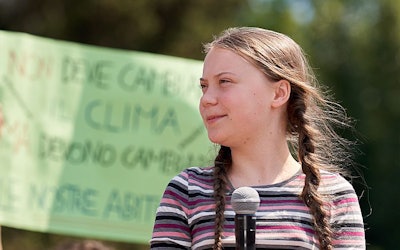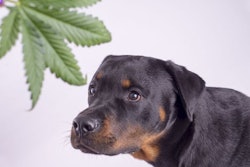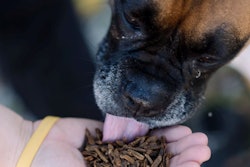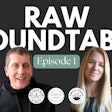
Time magazine selected Swedish environmental advocate Greta Thunberg as Person of the Year for 2019. My issue of Time arrived the day I left on a flight for a business trip. Flygskam, or flight shame, hit me every time Thunberg's cover shot peeked out of my my carry-on. Flygskam officially started in 2017 when Swedish singer Staffan Lindberg wrote an article pledging to give up air travel due to its greenhouse gas output and criticizing those who continued to fly. Adherents to the flygskam philosophy prefer trains or other forms of mass transit that result in lower per capita greenhouse gas emissions than airplanes.
This summer Thunberg crossed the Atlantic in a solar-powered yacht on her way to the United Nations Climate Action Summit in New York. She crossed the pond in 15 days while polluting it less, compared to about that many hours on a fossil fueled airplane. Similarly, others now brag about taking the train and eschewing flights. Aviation industry analysts with UBS, a Swiss bank, surveyed 6,000 people in the US, Germany, France and the UK, reported the BBC. Twenty-one percent had reduced the number of flights they took over the last year. The analysts noted that if flygskam continues, it could reduce growth of the air travel industry and confound projections used to substantiate new aircraft construction orders.
Pet food trends vulnerable to environmental shaming
My trip from St. Louis to Orlando, Florida would have taken two days by train or one day by bus. I assuaged my conscience by rationalizing that my own resource consumption during two extra days of travel would have created pollution, while reducing my productivity. As I boarded my flight, I thought about how areas of the pet food industry could be vulnerable to shaming based on associated pollution and environmental effects. Consider how, although related to dog health rather than the planet’s, one major trend suffered a sudden and unexpected hit, as the FDA investigation into canine dilated cardiomyopathy derailed the growth trend of grain-free pet foods. Might some form of pet food shame, (husdjursmat skam, according to Google Translate) affect dog, cat and other animal food companies suddenly and intensely?
Large proportions of prime muscle meat in mass-marketed pet food was the first trend that sprang to mind as a potential source of skam. Several pet food professionals I recently interviewed also noted high meat inclusion as an ecological elephant in the room, especially in omnivorous dog diets. Over the past few decades, some individuals, groups and pet food marketing campaigns have denigrated organ meat, byproducts and other tissues that most U.S. consumers don’t themselves eat. Pet owners' negative views certainly weren't helped by revelations about dog foods marketed as premium or human-grade, such as pulverized feathers and beaks masquerading as poultry meal or horse meat and barbiturates. A few bad apples... At the same time, dog and cat owners increasingly look for human-grade ingredient claims in pet food marketing and labeling, as people project human desires and diet fads onto their pets, including the low-carb, high-meat diet.
Considered from a global perspective, feeding steak to dogs while children starve seems like serious skam to me. Where I lived in Honduras, my friends worked under the tropical sun cutting sugar cane, but did not make enough money in a day to buy a small bag of superpremium high-meat pet food. What’s more, often their meals and mine included less meat than many high-end pet foods. Yet, I've never seen anyone swing a machete with more vigor, and I was in the best shape of my life. Must have been the delectable, freshly handmade white corn tortillas and hearty, little red beans…ironically two ingredients now stigmatized in pet food by some. On the world stage, high proportions of human-grade meat in pet food seems a bit Marie Antoinette-esque.
Beyond economic disparities, feeding fine cuts of meat to dogs and cats, while eschewing entrails, puts greater strain on the agricultural system and subsequently on the environment. In an oft-cited but criticized research paper, Gregory Okin, PhD, a University of California Los Angeles geographer, estimated the amount of greenhouse gases associated with meat eaten by U.S. pet dogs and cats. In 2017, PLoS ONE published his conclusion that dogs and cats accounted for approximately 25-30% of U.S. meat-related environmental damage. His calculations to reach that estimate made numerous assumptions about formulations, feeding, pet populations and other variables, which some scientists criticized. Nevertheless, the study attracted attention from national news media and instilled concern in some pet owners about the environmental repercussions of pets.
That consumer interest in pet food sustainability seems unlikely to disappear. Ecological effects of deforestation and fossil fuel combustion have become harder to ignore even in wealthy parts of the world. As ecological and social sustainability grow in importance to pet owners, certain trends may be affected, and pet owner demands can change faster and more easily than formulations, marketing campaigns or packaging.
Ultimately, the long-term, consistent business success of the pet food industry requires maintaining or propagating ecological processes and human societies upon which all economic systems depend. Or as Marcel Blok, owner of pet business consultancy Change Stranamics, recently said in an interview for another article, "It starts to dawn on people that a sustainable business and a sustainable planet go hand-in-hand. They are interdependent."

















